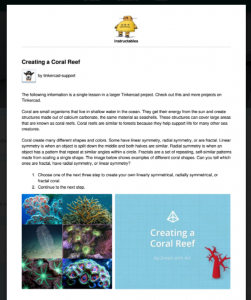o
As coral reefs die at an alarming rate, scientists are looking at innovative new ways to help stop this crisis. The problem stems from rising ocean temperatures. As the temperatures increase, the coral dies releasing algae and smaller organisms. For years scientists have used artificial reefs, which are underwater man-made structures such as sunken boats, rubble, and oil rigs to stimulate coral growth. Recently, scientists are experimenting with 3D printed reefs (or fake reefs) that mimic the texture and structure of natural reefs. The hope is that fake reefs will be less vulnerable to climate change and ocean chemistry.
Experimental installations of these 3D-printed reefs are now going on in the Mediterranean, the Caribbean, the Persian Gulf, and Australia. If they succeed in the coming years in luring not only fish but also baby coral polyps, which attach themselves to structures and multiply, they can grow into new reefs and reestablish some of the most important habitats on Earth. –Parker, Laura
"3D-Printed Reefs Offer Hope in Coral Bleaching Crisis." 3D-Printed Reefs Offer Hope in Coral Bleaching Crisis. National Geographic, 31 Mar. 2017. Web. 18 Sept. 2017.The Roughneck Tech Club is excited to design a variety of coral specimens and construct their own artificial reef using Instructables and Tinkercad.
As students research types of coral, they will choose a design type with linear symmetry, radial symmetry, or fractal to focus on. In the next few weeks, students will have a showcase to share their creations with the public.


Ms. Cooper,
This is such a wonderful project and opportunity for our students! I am so happy that you are in our school, serving our students in such an astounding way. Thank you!
Mrs. Velde